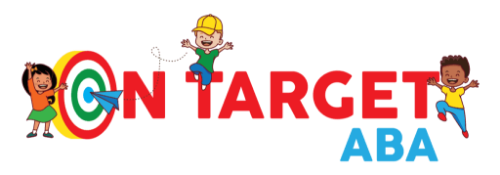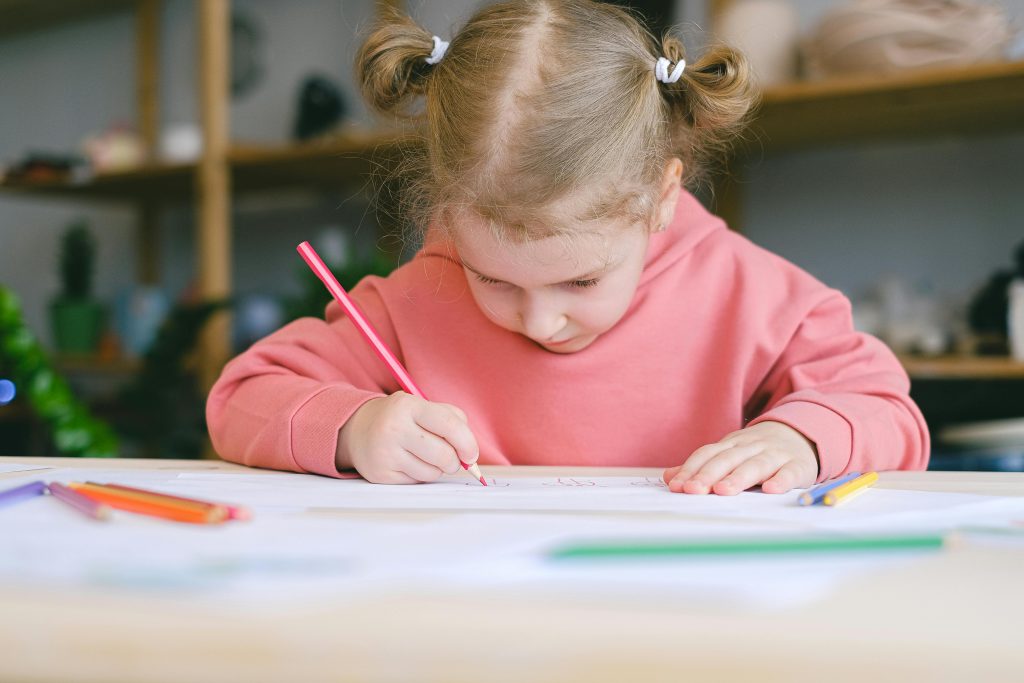🧠 AI Summary:
Ever wonder what your child’s day in ABA therapy really looks like? This guide takes you inside a typical day in ABA therapy, showing how structure, play, learning, and positive reinforcement come together to help children grow. Parents will discover how sessions flow, what goals are addressed, and how therapists blend fun with focus — all in a nurturing, supportive environment.
Inside an ABA Therapy Day
When families begin ABA, one of the most common questions we hear at On Target ABA is:
💭 “What does a typical day in ABA therapy actually look like?”
Parents want to know what their child will do, how learning happens, and what progress looks like day-to-day. The answer? It’s structured, but full of joy. Every moment — from the morning greeting to the final goodbye — is planned with care, purpose, and fun.
A typical day in ABA therapy is more than learning skills; it’s about helping children build confidence, communicate better, and feel proud of their achievements.
Morning Arrival and Warm-Up
Each day begins with familiar faces and cheerful hellos. Children are greeted by their RBTs (Registered Behavior Technicians), often with a favorite toy or activity ready to start the day positively.
Therapists review the visual schedule — a picture-based outline of the day — so children know what’s coming next. This helps reduce anxiety and build independence.
Some children may start with a few minutes of playtime to “warm up” — stacking blocks, coloring, or exploring a sensory bin. Others might enjoy music or a short walk around the center.
These first few minutes are important. They help therapists pair (build rapport) with each child so they associate the environment with comfort and fun.
According to Autism Speaks, positive pairing at the start of each session strengthens motivation and engagement throughout therapy.
Structured Learning Sessions
After warm-up time, the therapist transitions into structured learning blocks. These sessions are designed around your child’s personalized goals, which may include:
- Communication and language skills
- Social play and turn-taking
- Fine and gross motor coordination
- Emotional regulation
- Functional life skills (e.g., dressing, washing hands)
Each block lasts about 10–15 minutes and is followed by reinforcement — praise, a high five, or a quick play break.
This alternating rhythm of learning and reinforcement keeps children motivated and helps them stay focused longer.
For example:
- A child practices naming objects → earns bubbles time.
- A child completes a puzzle → gets to play with favorite toys for two minutes.
Therapy is customized to your child’s learning pace.
At On Target ABA, we believe structure and joy can coexist — every goal is wrapped in play.
Sensory and Snack Breaks
Every child processes the world differently. That’s why a typical day in ABA therapy always includes built-in breaks to regulate sensory needs and energy levels.
Some children need quiet time in a calm space with dim lights and noise-canceling headphones. Others thrive on movement breaks — jumping on a mini trampoline or swinging gently.
Snack time is also a natural learning opportunity. Therapists use it to practice:
- Requesting (“I want juice”)
- Waiting patiently
- Trying new foods
- Using utensils
ABA turns these daily moments into meaningful lessons in communication and self-help.
As the CDC notes, structured routines paired with flexibility support both behavioral regulation and independence.
Group Learning and Social Skills
If your child attends a center-based program like On Target ABA, group learning is a special part of the day.
Group sessions may include:
- Circle time (songs, greetings, sharing)
- Cooperative play (games, puzzles, role-play)
- Sensory exploration (art projects, building with peers)
- Social story time (reading about emotions or friendship)
These activities help children practice taking turns, waiting, and responding to others — essential social-emotional skills for home and school life.
Therapists guide interactions gently, reinforcing positive behaviors like sharing and eye contact.
Learning Through Play
Parents are often surprised to learn that most of a typical day in ABA therapy looks like play. That’s intentional. Play is how children learn naturally — especially when working on new communication or social skills.
For instance:
- A therapist might use toy cars to teach counting or colors.
- A pretend kitchen set becomes a lesson in following instructions.
- Building blocks turn into practice for turn-taking and problem-solving.
Every toy, song, and interaction has a purpose behind it. ABA therapy connects fun with growth.
At On Target ABA, we call this purposeful play — because joy is the bridge between learning and lasting progress.
Parent Collaboration and Updates
Communication doesn’t stop at the therapy room door. Parents are an essential part of every success story.
Throughout the day or week, your child’s therapist may share:
- Quick updates on new skills or milestones
- Strategies to try at home (e.g., prompting techniques, behavior reinforcement)
- Progress summaries from your BCBA
You can also expect regular parent meetings where goals and data are reviewed. These check-ins make sure therapy aligns with your family’s priorities.
Learn more about parent involvement in our blog Parent Training in ABA Therapy: Building Success Beyond the Session.
Outdoor and Gross-Motor Play
Movement helps children release energy and reset focus. Many On Target ABA centers include playgrounds or outdoor spaces for free play.
Activities like hopping, running, climbing, or playing ball develop coordination and teamwork while promoting social skills.
Therapists weave learning into these moments:
- Taking turns on the slide
- Asking a peer to play
- Following playground rules
Even outdoor fun is an extension of structured learning — helping children apply new behaviors in real-world environments.
End-of-Day Reflection and Wrap-Up
As sessions wrap up, children return to calm activities like story time or music. This “cool down” helps transition from structured learning to home routines.
Therapists record session data — how goals were met, what worked best, and what to adjust for next time.
Parents often receive a daily note or report, highlighting:
- Skills practiced
- Behaviors observed
- Reinforcers that worked
- Plans for upcoming sessions
These updates help families see progress in real time and stay engaged in their child’s journey.
A Sample Half-Day ABA Schedule
Here’s what a half-day typical day in ABA therapy might look like at On Target ABA:
| Time | Activity | Focus Area |
|---|---|---|
| 9:00 AM | Arrival & Free Play | Rapport building, transitions |
| 9:15 AM | Table Time | Communication, fine motor |
| 9:45 AM | Sensory Break | Self-regulation |
| 10:00 AM | Group Activity | Social interaction, turn-taking |
| 10:30 AM | Snack Time | Requesting, waiting, self-help |
| 11:00 AM | Gross-Motor Play | Movement, coordination |
| 11:30 AM | Story & Music | Attention, listening, imitation |
| 12:00 PM | Wrap-Up | Review, reinforcement |
Each session is customized, but this structure ensures balance — active learning, rest, and joyful engagement.
For Home Practice: Extending Therapy Beyond the Center
Consistency helps children thrive. You can mirror parts of your child’s typical day in ABA therapy at home with small routines:
✅ Morning Visual Schedule: Use pictures to show what’s next.
✅ Positive Reinforcement: Praise effort and success often.
✅ Short Play Tasks: Practice turn-taking or labeling objects.
✅ Calm Transitions: Use countdowns or songs before changes.
These familiar structures help reinforce what your child learns during therapy.
The Role of the Therapy Team
Your child’s ABA day is powered by a caring, collaborative team:
- BCBA (Board Certified Behavior Analyst): Designs the treatment plan, tracks progress, and adjusts goals.
- RBT (Registered Behavior Technician): Works directly with your child, implementing goals and collecting data.
- Program Supervisors and Admin Staff: Keep scheduling, communication, and coordination smooth for families.
At On Target ABA, every team member is part of your support system. You’re not just starting therapy — you’re joining a family of professionals who celebrate every victory.
Celebrating Progress
The best part of a typical day in ABA therapy is seeing growth unfold in real time. It might be a child saying a new word, sharing a toy, or staying calm through transitions.
These “small” wins are the foundation of lifelong skills — and they deserve celebration.
Every laugh, every smile, every moment of connection means your child is building independence, confidence, and joy.
Ready to See ABA in Action?
Whether your family is just getting started or considering a new center, we’d love to show you what ABA looks like at On Target ABA.
We proudly serve families in:
Schedule a tour or contact us today to experience the warmth, structure, and growth that define every On Target ABA session.

